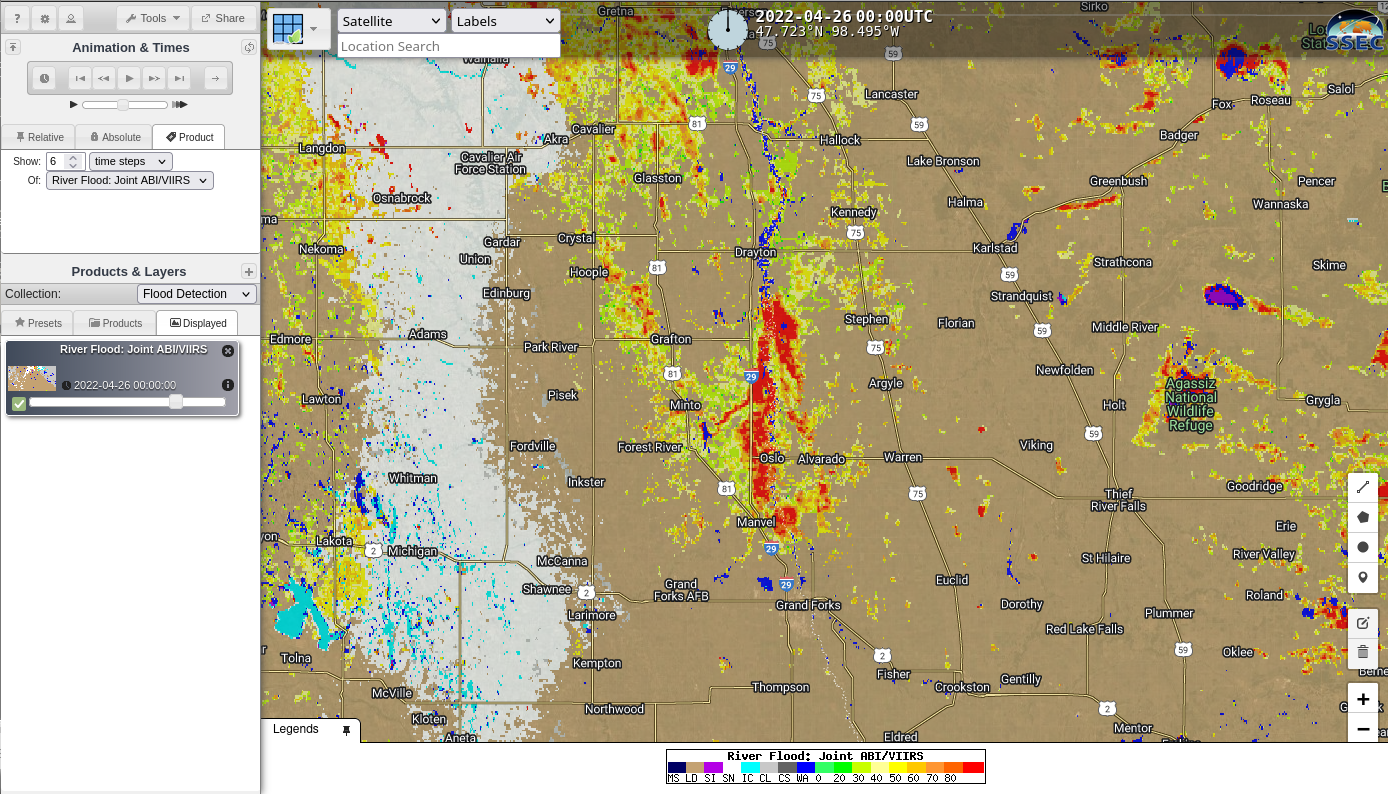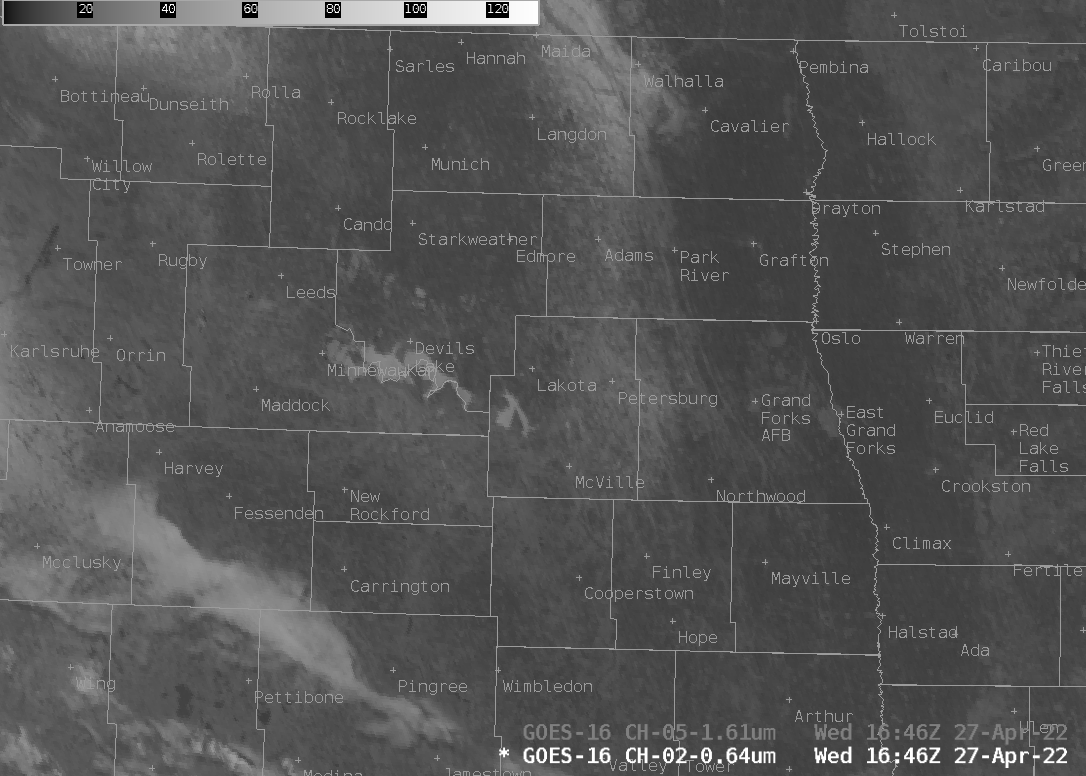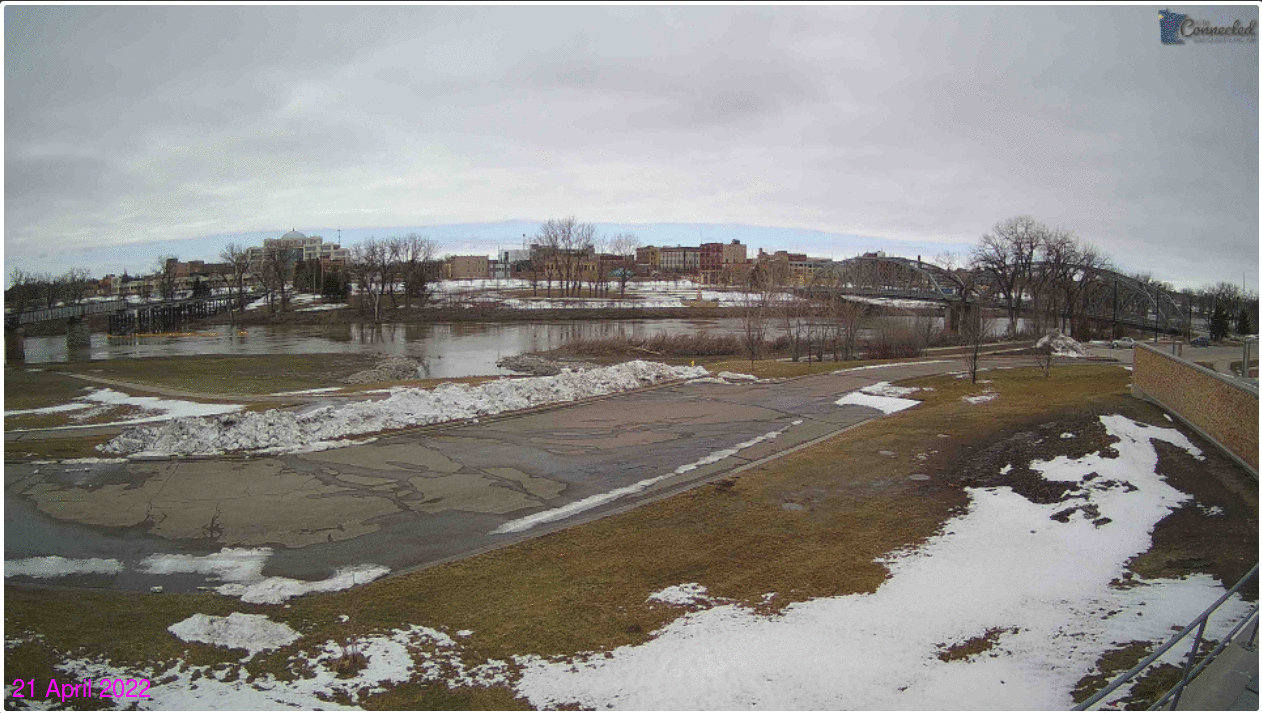Flooding along the Red River of the North

The above image (from here; other flood product are available here) shows inundation occurring around the Red River of the North on the North Dakota/Minnesota border. The image combines the excellent spatial resolution of VIIRS on NOAA-20/Suomi-NPP with the excellent temporal resolution of the GOES-16 ABI) Precipitation over the past 7 days ending at 1200 UTC, below, from this site, shows an axis of heavy (>4″!) precipitation just south of Grand Forks. Flood gauges on 27 April (here, from “River Observations” at this site), show major flooding occurring over eastern North Dakota.

The toggle below compares Band 2 and Band 5 (and the Day Land Cloud RGB) on 27 April 2022 at 1646 UTC. The 1.61 µm imagery has a very dark signal over the flooded region between Oslo and Drayton — because water absorbs energy at that wavelength (that is, it doesn’t reflect much back to the satellite) — so there is excellent contrast between land and water. Snow (and cirrus clouds) also absorb energy with a wavelength of 1.61 µm, so the reflectance differences between visible/0.64 µm (very bright) and the 1.61 µm (darker) can be used to identify regions of snow on the ground (for example between McClusky and Karlsruhe at the western edge of the image; between Langdon and Petersburg over the central part of the image); features that are bright in both the 0.64 µm and 1.61 µm imagery (for example, the feature stretching east-southeastward from between McClusky and Harvey to near Pingree) are clouds. Any RGB that includes both the 1.61 µm and the 0.64 µm (or 0.87 µm) imagery will highlight snow on the ground. The Day Land Cloud, shown in the toggle below, shows cyan in regions of snow (or cirrus).

The series of webcam images below, spanning 21-27 April (with no 23 April image), from this website, shows the changes in the river at the Sorlie Bridge in East Grand Forks.


